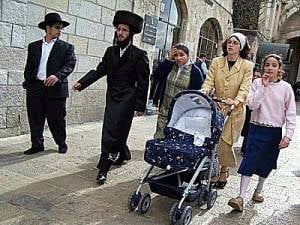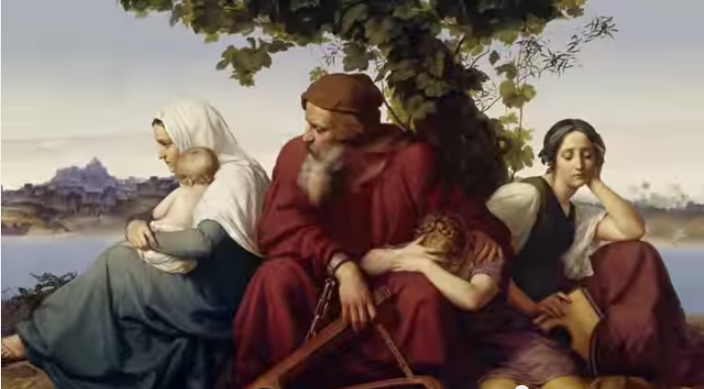
By Rabbi Ari Enkin, rabbinic director, United with Israel
Jews have generally worn the clothes and styles of the societies in which they lived as long as the requirement of modesty was met.
The Jewish dress code has always been influenced by the Torah from both a ritual and a general perspective, but most notably with an emphasis on modesty. Modesty is of utmost important for both men and women. Indeed, wearing modest Jewish clothing is essential for orthodox Jewish women. For example, Orthodox Jewish women tend to wear clothing that is not too bright or tight-fitting, with sleeves that cover the elbows and skirts that cover the knees. In some communities, women wear socks, tights or stockings as well, but this is not universal among the Orthodox.
Married Jewish women typically cover their hair as a sign that they are no longer single. Orthodox Jews train their girls from a very young age to dress modestly. Men in some communities are discouraged from wearing shorts, although the laws that govern covering the body are not as stringent with men as with women. Jews have generally worn the clothing and styles of the societies in which they lived as long as the requirement of modesty was met. It has long been a custom for Jews to have special clothes for Shabbat and festivals, contributing to the special character of these days.
The Talmud recalls the tale of a remarkable woman named Kimchis. She had seven sons and each served as Kohen Gadol (High Priest). When asked how she merited such great honor, she explained that she never exposed her hair, not even in her own home. There are many more stories in the Talmud about the greatness and importance of modesty.
Orthodox Jewish women wear long skirts because pants are forbidden for women according to most opinions in Jewish law. Knee covering also varies among sects within Orthodox Judaism. Some women will wear tights or any other leg wear even if the legs are seen, as long as they are covered. Some ultra-orthodox Jewish women are very strict to wear a thick leg covering with dark colors so that no part of the leg can be seen.
Influences other than Modesty
In the Jewish world, clothing has reflected religious identification, social status, emotional state and even the Jews’ relationship with the outside world. The rabbis taught that maintaining their distinctive dress in Egypt was one of the reasons that the Jews were found worthy of being rescued from slavery under Pharaoh.
The Torah prohibits wearing a garment that consists of both wool and linen (Leviticus 19:19). It is also forbidden for a man to wear a woman’s garment and vice versa (Deuteronomy 22:5). As part of the Torah’s ritual-based clothing, men are required to put fringes on the corners of a garment (Numbers 15:37-41) in order to to remind a Jew to observe all the mitzvot (commandments) of the Torah. (Kind of like the age old tradition of tying a string around your finger so you don’t forget something!)
The only clothing that the Torah discusses in great detail is that of the priests, especially the High Priest. Yet while the High Priest’s garb was elaborate, colorful and full of symbolism, on Yom Kippur, the one day a year when he would enter the Holy of Holies, he wore only white linen clothing (Leviticus 16:4) as a sign of purity and humility. Indeed, white clothing has become the symbol of purity.

Orthodox Jewish family. (orthodox-jews.com)
When the Jews were sovereign in the Land of Israel in ancient times, the standard of dress reflected their status. Wealthy individuals, such as landowners, wore elaborate and expensive clothing. The nobility and upper classes dressed more elegantly. The styles of the neighboring peoples also had their influence.
When the Jews were exiled (70 C.E.) from their land and lived under foreign control, the impoverishment of many became evident in their dress. In some cases, Jews created or adopted their distinctive dress in order to separate themselves from the dominant non-Jewish culture. In some countries the Jews were required by law to dress in a particular way, including, for example, special hats and badges in medieval Spain and 13th-century Poland or yellow stars in Nazi Germany. Hasidic Jews of Eastern Europe came to adopt fashions of the early modern Polish nobility, such as the black robe (caftan) and the fur hat (shtreimel), which are still worn by various groups of Hasidic Jews today.
In our next installment we’ll look at some of the more common Jewish and Hasidic garments.
Do You Love Israel? Make a Donation - Show Your Support!
Donate to vital charities that help protect Israeli citizens and inspire millions around the world to support Israel too!
Now more than ever, Israel needs your help to fight and win the war -- including on the battlefield of public opinion.
Antisemitism, anti-Israel bias and boycotts are out of control. Israel's enemies are inciting terror and violence against innocent Israelis and Jews around the world. Help us fight back!
